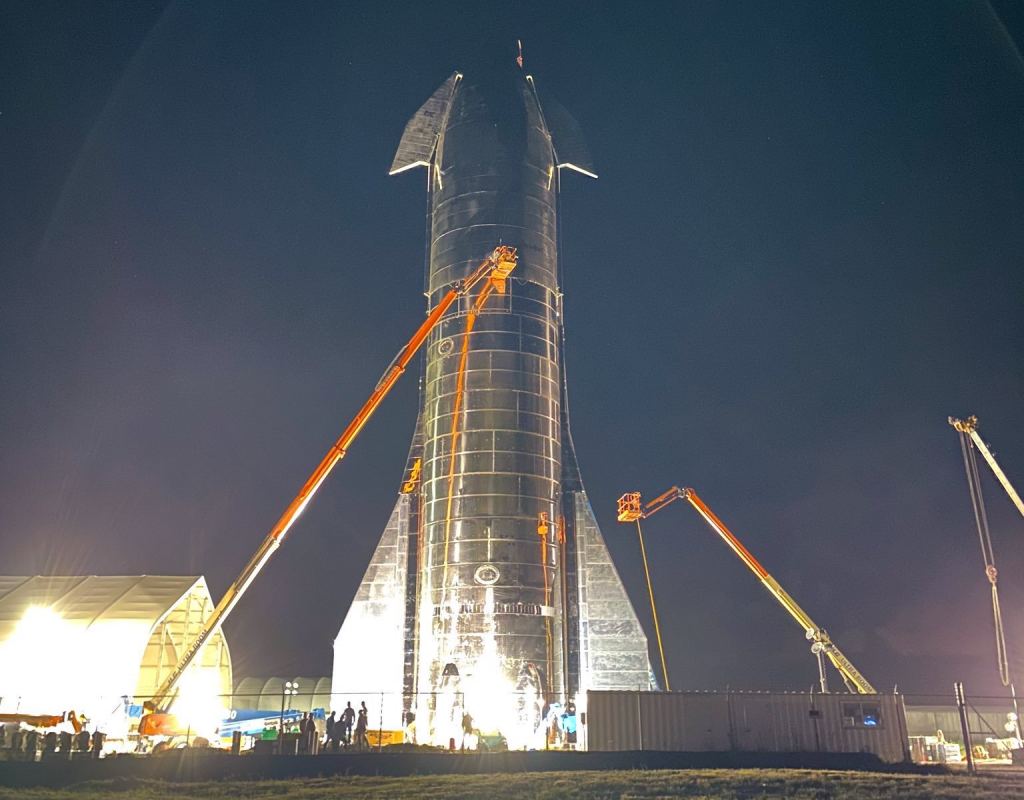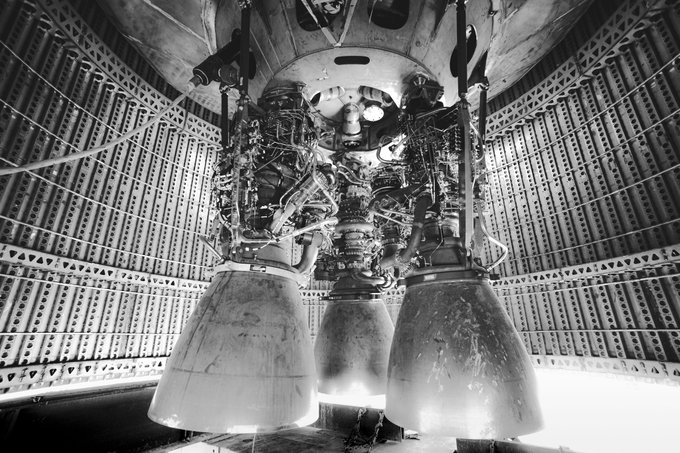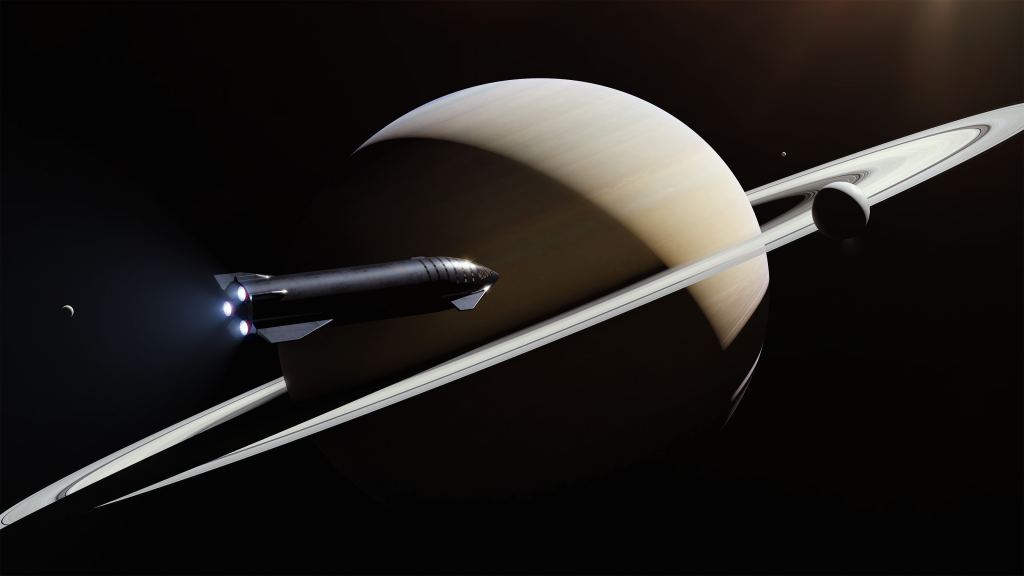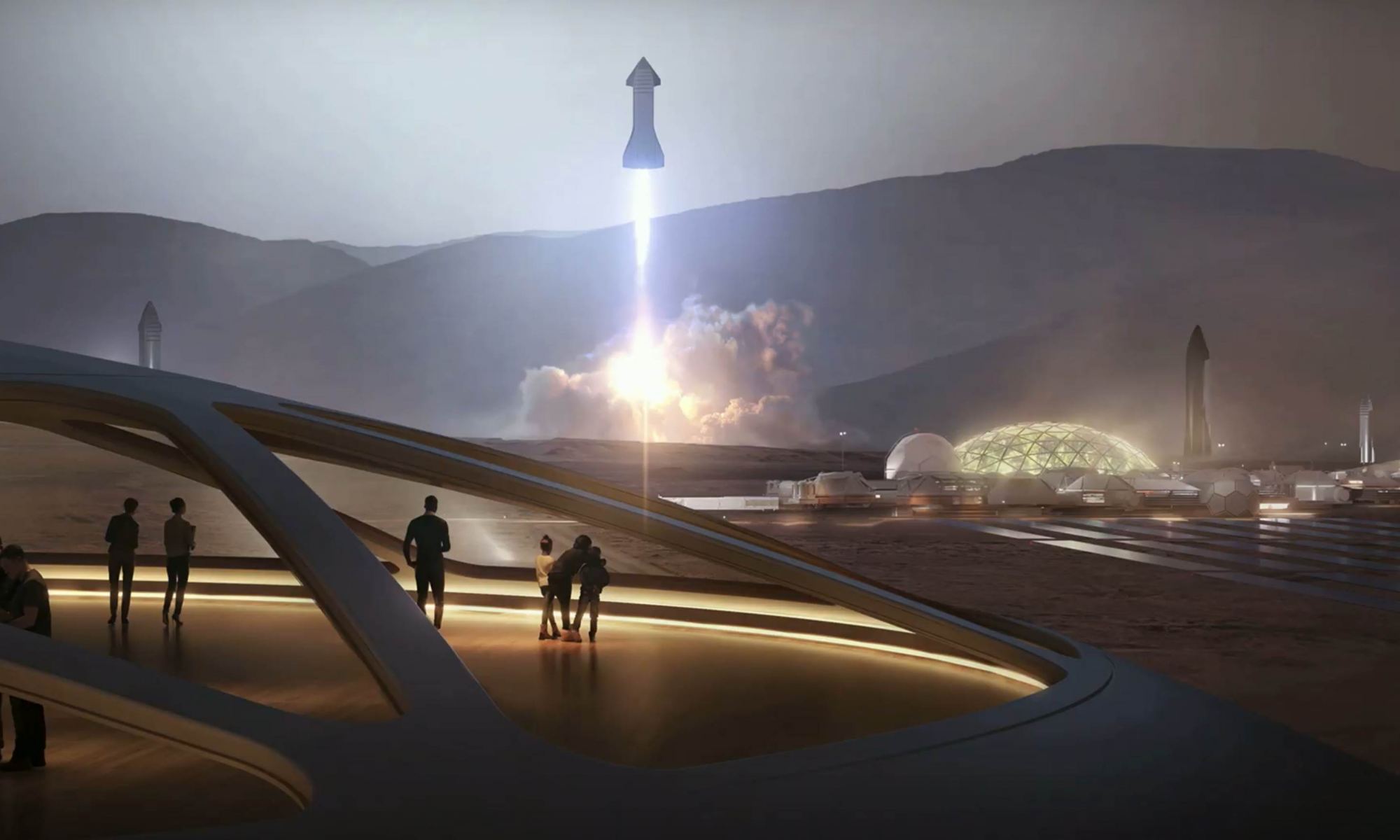On Saturday, Sept. 28th, SpaceX founder Elon Musk presided over a media circus at their testing facility in Boca, Chica, Texas. With the fully-assembled Starship Mk.1 as his backdrop, Musk shared the latest updates on the Starship launch system, which include a timetable for when the first test-flights, commercial flights and crewed flights will commence. Sometime next year, he promised, it will begin taking passengers to space!
The event, which was live-streamed, began at 07:00 PM local time (05:00 PM PDT; 08:00 PM EDT). Musk kicked things off by addressing the challenges that come with trying to escape Earth’s gravity well and going to space in a way that is cost-effective. He also took the time to acknowledge that it was 11 years ago, on that very day, that SpaceX conducted its first successful launch with their Falcon 1 rocket (after three failed attempts).
That milestone proved to be the difference between SpaceX – a fledgling company founded six years prior (in 2002) – going bankrupt and becoming the powerhouse that it is today. A Falcon 1 rocket was also set up beside the finished Starship Mk.1 prototype to provide a sense of scale and to act as a visual reminder of just how far the company come.

But as Musk went on to say, the learning curve was still very steep and it took a lot of work for him and his colleagues to get to the point where they could retrieve their rockets and make them reusable. As Musk described those early, heady days, before they had mastered retrievability:
“We were very naive, obviously, very naive on many levels back then because we did actually try to recover the first stage. So the first stage had a parachute on it and we thought, ‘okay, just pop the parachute when it comes back into the atmosphere and it’ll land somewhere in the ocean and we’ll fish it out of the ocean with a boat’. This does not work.
“When the rocket comes in from space, that first stage is coming in like Mach 10 to 12. And it hits the atmosphere like its a concrete wall, and boom! You actually have to orient the rocket carefully, you have to have aerodynamic surfaces, you have to do an entry burn to slow it down, then you’ve got to guide it through the atmosphere and do a propulsive landing. This took us many attempts… I think it might have taken us fourteen attempts before we successfully landed the rocket.”
This was followed by a footage reel of the Grasshopper test vehicle, a single-engine variant of the Falcon 9 that was used to conduct the first “hop tests”. After many tests that brought the vehicle to greater and greater altitudes (and no crashes), the company had finally reached the point where they knew they could retrieve the first stages of their rockets.

This, Musk said, is the same thing that the Mk. 1 will do now that its three Raptor engines have been integrated and the hull has been joined. “This thing is going to take off, fly to 65,000 feet – about 20 km – and come back and land in about one to two months,” he said. “So that giant thing, it’s gonna be pretty epic to see that thing take off and come back.”
In short, Starship Mk.1 and maybe the Mk.2 – which is still being assembled at the SpaceX facility in Cape Canaveral, Florida – could be conducting hop tests within eight weeks (late October or November). If all goes well, the orbital-class Starship prototypes could be conducting flights to space in six months from now and carrying its first passengers there sometime in 2020.
What followed was the much-anticipated updated design of the Starship, which measures 50 meters (165 feet) and has two steerable fins on its forward and aft sections (rather than three fixed fins that act as landing struts as well). The aft section also includes four smaller, fixed fins, with two mounted on each side.
He also showed how the updated design would fare when entering an atmosphere, which he described as a “controlled fall”. The steerable fins are intrinsic to this, creating drag so the spacecraft can shed speed. They also help the rocket reorient itself so its engines can then fire and bring the Starship in for a soft landing.
According to the updated design, the finished Starship will have a dry mass of approximately 120 tonnes (132 US tons) and weigh 150 tonnes (165 US tons) fully-loaded. This will be made possible thanks to six Raptor engines, three that are optimized for sea level and generate 200 tonnes (220 US tons) of thrust and three that optimized for vacuum and generate 220 tonnes (242.5 metric tons).
The Raptors are also capable of reorienting themselves (aka. gimbaling) to optimized efficiency and allow the craft to move laterally. Other items of note included the updated hull design, which relies on 301 stainless steel to maximize heat resistance, provides a greater strength-to-weight ratio under cryogenic conditions (aka. in space), and is more cost-effective and lightweight than carbon fiber (which was originally proposed) or aluminum-lithium.
An added bonus is that its easy to weld, as demonstrated by the fact that SpaceX engineers were able to assemble it outside without a factory. Ad
“On Mars, you can cut that up, you can weld it, you can modify it, no problem! You are out there on the Moon or Mars. You want something that you can modify, that you can cut up and use for other things. That’s like for sure a great thing! Obviously, I am in love with steel.”
Next up was the updated design of the Super Heavy booster, which will measure 68 meters (223 feet) in length and 9 meters (feet) in diameter. The booster will be equipped with 37 Raptor engine and have a propellant capacity of 3,300 tonnes (3,638 US tons) of liquid methane and liquid oxygen (LOX) fuel. The updated version also includes four actuator fins on the upper section and 6 fixed rear fins (which serve as legs).
Once integrated with the Starship, the entire launch system will stand 118 meters (387 feet) tall. Simulations followed that showed the Starship and Super Heavy taking to space and refueling with a tanker ship in orbit (shown above). This process, Musk demonstrated, will consist of a Starship and tanker rendezvousing in orbit and connecting their rear sections to each other.
Combined with reusability, orbital refueling will be intrinsic to Musk’s long-term goal of establishing a base on the Moon and on Mars. In this vein, Musk shared some updated images of what a future base on the Moon, a self-sustaining city on Mars (aka. Mars Base Alpha), and missions to deep space (like Saturn) would look like using the Starship as a transport system.
Musk then wrapped things up (before a short break that was followed by an extended Q&A session) by reiterating why he hopes to see humanity become an “multiplanetary species”. According to Musk, humanity is (to the best of our knowledge) the only sentient species in the galaxy, and we only have a certain amount of time to get out there and plant the seed of our civilization before its too late.

This is especially crucial, he added, considering that it took about 4.5 billion years for us to get to the point where life could contemplate expanding into space and colonizing other planets. Meanwhile, the Sun is going to gradually get bigger and hotter over time and (even in the absence of global warming) it will eventually overheat the Earth and make life here untenable.
As Musk summarized, this gives us just a few hundred million years to plant the seed of human consciousness and civilization elsewhere:
“So it appears that consciousness is a very rare and precious thing and we should take whatever steps we can to preserve the light of consciousness. And the window has been open only now after four and a half billion years… that’s a long time to wait and it might not stay open for long. I think we should become a multi-planet civilization while that window is open… I think we should really do our very best to become a multi-planet species and to extend consciousness beyond Earth, and we should do it now. Thank you.”
As with just about everything Musk says, much of what he proposed and predicted with this latest update (including the timetables) might seem a bit optimistic. However, Musk has every reason to be optimistic at this point. After many years of struggling, SpaceX has delivered on reusability with the Falcon 9 and Falcon Heavy and inspired other aerospace companies to follow a similar path.
With their latest launch vehicle coming together nicely, Musk is almost at the point where he can deliver on the very promise SpaceX was founded on seventeen years ago – to reinvigorate space exploration by lowering costs and achieve the crewed exploration of Mars.
Further Reading: SpaceX


It will be interesting to watch his first crewed launch when it finally occurs. Elon Musk is nothing if not audacious.